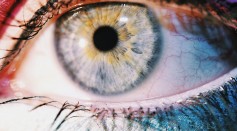optics

Statin for Vision Impairment: Hypercholesterolemia Medicaiton Alleviates High Blood Pressure and Combats Glaucoma, Study Says
Optical Breathalyzer Installed in Smartphone May Help Measure Blood Alcohol Content
Asian Beetle Species Offer Insights on New Color, Material Strength Technologies
Liquid Metal Can Now Be Controlled Between Reflective and Scattering States
3D Printing Can Now Create Precise and Complex Microlenses

New Optical Coatings Reflect and Transmit Colors of Impressive Purity
Enhanced Microring Sensors for Optical Applications
Identification of Dangerous Chemicals Made Possible Through Pin-Sized Sensors in Smartphones
Researchers Have Just Developed the Sharpest Laser in the World
Experts Reveal What The Eyes Tell About Person’s Health
Transmitting Information At The Speed Of Light, Almost
The True Story of the Dress That Divided The World
ESA Rosetta Spacecraft Is Showing Off Its ‘Cheops’
Most Popular

How Technology Is Changing the Real Estate Industry?

Study Reveals High Turnover in Scientific Research Careers: What This Means for Future Scientists

How a Plant-Based Diet Can Protect Against Breast Cancer: Insights from Nutrition Research

Why It's So Difficult to Lose Weight: The Biological Explanation Behind Obesity






